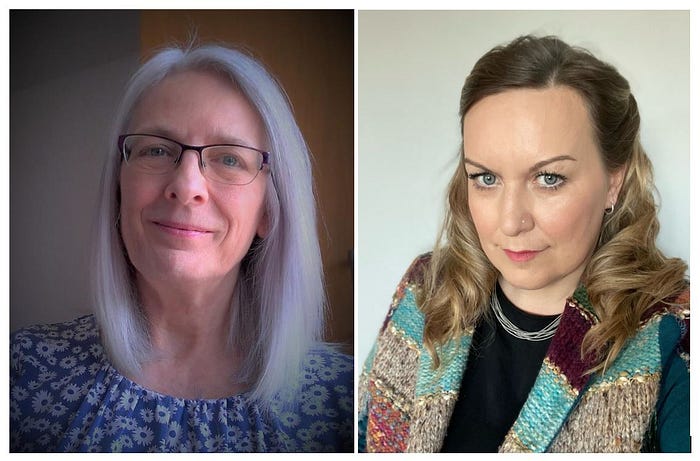Out of sight progress report: What have we found
In this blog Debbie Ivanova, Deputy Chief Inspector — People with a learning disability and autistic people, and Jemima Burnage, Deputy Chief Inspector and Mental Health Lead, update on what has changed just under a year and a half on since CQC’s Out of Sight report published in 2020.

We’re now 1 year and 5 months on since we released our 2020 Out of Sight report in October 2020. In 2020 we found many people with a learning disability, mental ill health and or autistic people were in inappropriate services with poor cultures that did not meet their needs — sometimes with high levels of restraint, segregation and seclusion. We made recommendations to improve care for people and to challenge the status quo. Unfortunately, this hasn’t happened quickly enough.
Today, we’ve published the final Out of sight progress report. This takes a look at progress made on the report’s 17 recommendations. We found that the health and social care system still has a long way to go to make the improvements needed. People feel stuck in the system and it’s now more than ever, that we desperately need to come together and bring about change. We need more and better community support services for people with a learning disability and autism, and we need to support people earlier on before they get to a crisis point.
We really want to make sure that this report shines a light on where things are going well and where things need to be improved in relation to each recommendation so we can hold all system members to account. We do this through giving them a RAG (red, amber, or green) status on whether each recommendation has been implemented and has had impact. Our review shows that no recommendations have yet been fully achieved.
Where not enough progress is being made
Let’s look at where we need to make more progress, before we look at how we get unstuck:
- We find in the report that there are still too many people in mental health inpatient services. They often stay too long, do not experience therapeutic care and can be subject to restrictive interventions, which cause trauma. We find that one of the reasons this is happening is due to a lack of community services for people, both to move on to and to help prevent admissions.
- The lack of community services and overwhelmed mental health inpatient services also then means there are a lack of beds for those who really need them, across all mental health services.
- For many people, there is not the right housing, with the right support in place, which means that people are more likely to be living in unsuitable conditions, which break down. This can lead to hospital admission. People then often end up moving around the system from one service to another because their needs are not being met.
- For people with a learning disability and autistic people, Care (Education) and Treatment Reviews (C(E)TRs) are important to stop admission to hospital and, if admitted, progress towards discharge. Where C(E)TRs take place, often their recommendations are not carried out, which means they are not as effective as anticipated
The above findings are also backed by the stories we heard from people who use services and their families. We spoke to many people who told us about their experience of care in the process of writing this report. One person, Jasmine, who is autistic and was admitted to hospital due to a bad episode of depression told us ‘I did not feel safe in the hospital as there was a patient who was verbally and physically aggressive towards me’. We’ve got to make sure that this experience is not normalised, and that people feel cared for in a therapeutic environment rather than afraid when they are using inpatient and community services. Let’s look at some of the next steps to help take us in a better direction.
How do we move forward
In our report we recommend actions for moving this work forward based on the key themes in the report. It’s still possible to achieve improvements and positive change in this area so, even if progress is slow, we mustn’t give up the fight. Below we draw out what we think are some of the key ways to move forward on this work:
- All Health and social care system partners must collaborate with people with lived experience and their families, to coproduce changes at system, provider and an individual level so that people can have the right care and support
- Families’ views should not only be listened to, but acted on, so that people can have the right care and support to be able to lead their best lives
- Where hospital admission is not the best option for a person, community provision must be developed to provide a better alternative. This is because people are more likely to experience restrictive interventions in hospital settings
- Care, (Education) and Treatment Reviews (C(E)TRs) must be made statutory so that providers and commissioners are accountable for implementing the recommendations from the reviews
- People can access the right home with the right support
- Clear accountability in commissioning and local systems held to account for the range and quality of provision. Governance for this must be clear. For services for people with a learning disability and autistic people this lies with the Department of Health and Social Care Building the Right Support delivery board
- We need the same clarity in mental health provision across health and social care so everyone is held to account
Full delivery of the recommendations can be delayed no longer.
While we found there were many negative stories in the report, we also spoke to some people who had a positive experience of the health and care system. Ravikah, who has used mental health services told us ‘I can honestly say that for one of the first times in my life, the mental health services were absolutely amazing. I was in need of specialist therapy for Post-Traumatic Stress Disorder, which was organised via Zoom once a week, and my community psychiatric nurse (CPN) also called each week, which really helped me feel cared for and not so alone’.
Conclusion
The above story gives us hope that the health and care system can provide good care if the right approach is taken. Ravikah’s experience, which is detailed further in the report, demonstrates she received good, person-centred and specialist care in the community. If the above steps for moving forward and the remaining suggested actions for change in the report are followed, we believe more people will receive the care they deserve and will lead to more positive stories like Ravikah’s.
We recently spoke with a mother who’s son is currently being segregated in terrible conditions. In relation to her son’s experience, she said ‘Nothing has really improved, and I am wondering how has it come to this?’¹. We must create change to stop people experiencing this and to ensure that people are living the highest quality life they can. We therefore urge all health and social care partners to come together and move forward transferring the planning and good intentions into action, taking responsibility for implementing the changes needed. Change is still possible and actioning the suggested recommendations in our report is a good place to start.
Read the full report and the accompanying podcast.
¹CQC are aware of this case and are monitoring the service. We are due to re-inspect this service in Spring 2022.
